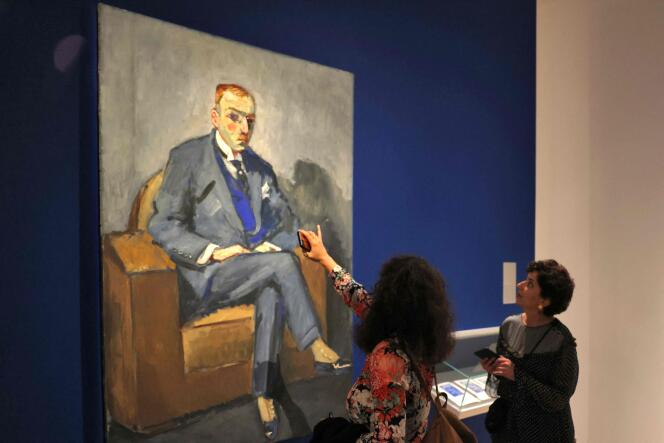Revival of Sursok Museum in Beirut


The scars of the August 4, 2020 explosion, which killed more than two hundred and twenty people, have been gradually erased on Ashrafieh Hill, facing the port of Beirut. Despite the economic crisis that hit Lebanon, the district is coming back to life with its newly restored colorful buildings, cafes and art galleries. The re-opening of Sursock Museum on Friday 26th May, after two and a half years of operation, marks a new stage in this renaissance. “It is a beautiful moment of healing for those who have seen this ruined museum. It is the symbol of Beirut and the survival of cultural life.”Welcome to its director, Karina El-Hallow.
Since its opening in 1961, the Sursok Museum has been at the center of Lebanese and Arab cultural life. After his death in 1952, Lebanese art collector and philanthropist Nicolas Ibrahim Sursok donated his house to the municipality to keep it vacant. It was one of the first modern and contemporary art museums in the Arab world. Over the years, its collections have grown to include 1,600 works by Lebanese artists such as Chafik Abboud, Paul Giragossian and Jean Khalifa, as well as 12,000 archives on the art history of Lebanon and the region.
The facility, located 800 meters from the port of Beirut, suffered significant damage in the tragedy of August 4, 2020. “More than 70% of the museum structure was destroyed”, explains Karina El-Hallow. The explosion of the explosion destroyed everything in its path: windows and stained-glass windows, doors and roofs, elevators and the electrical system. More than
Forty-seven works were damaged. Thanks to international solidarity, the museum was able to collect more than two million dollars to finance the restoration work. Donors have had to urgently develop funding schemes to bypass the Lebanese state, which is bankrupt and plagued by corruption.

This photo was taken on August 8 at the entrance to the courtyard of the Sursok Museum in Ashrafieh district of Beirut. The Museum of Modern Art is among the many cultural and religious sites damaged by the explosion that devastated the city on August 4. The Sursock is now an empty shell: its stained-glass facade is dusted, its 1920s Arabic living room damaged and at least twenty works damaged.
The disaster also caused extensive damage to the old neighborhoods of Gemayze and Mar Mikhaeli. Particularly affected are many traces of Ottoman-era architecture, the houses with triple-arched windows characteristic of the Lebanese capital, as a recent article the world. In total, at least 8,000 buildings in the city were affected. On August 27, the United Nations Educational, Scientific and Cultural Organization (UNESCO) announced two conferences to raise funds for Beirut’s architectural heritage, cultural world and schools.
International Ambulance
“We developed a crisis management model with this complexity in mind, and there was a great commitment, integrity and solidarity from the General Directorate of Antiquities and civil society.” This is a great example that Beirut gives us in the field of heritage., welcomes Valerie Freland, director of the International Alliance for the Protection of Heritage in Conflict Zones (Aliph). The Geneva-based foundation was the first to release emergency aid to protect the museum’s roof and structure. The work was completed with funding from the Agenzia Italiana Per la Cooperazione Allo Sviluppo (AICS) under the UNESCO Beirut initiative.
Source: Le Monde
Leave a Reply